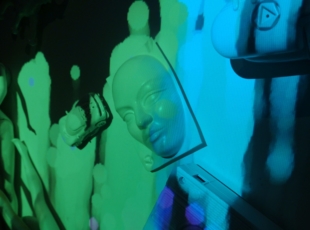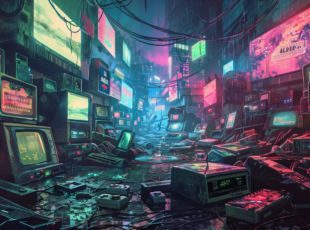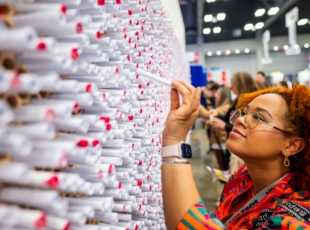The Walloon spring will be digital
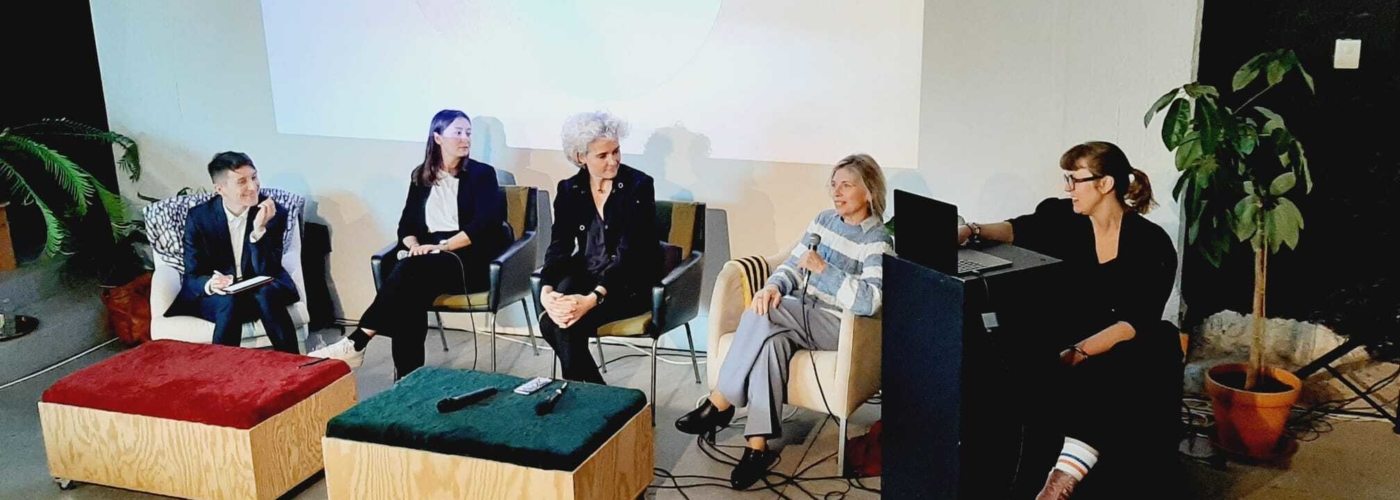
Article author :
Since the beginning of 2024, KIKK has been steering wake!, the Walloon creative-digital community label. On tour around the four corners of Wallonia and Brussels, wake! stopped off in the capital last March 22 to take in the Digital Spring. A moment to swap ideas, inspire one another and co-build the sector’s future.
It is for a double Brussels event coordinated by wake! that a small community of digital creativity operators and entrepreneurs has gathered. It has just gone 09.30 outside the iMAL, one of the rare spaces entirely dedicated to the digital arts, ensconced along the edge of the Brussels canal. The piping-hot coffee rouses still drowsy minds. Vital, as the day begins with a flourish. Without further ado, AC Coopens is straightaway asking the question, ‘Digital Arts as a business, but how?’
Acting as the moderator of this opening session dedicated to the presentation of the findings of a far-reaching study carried out by the DI/S (Digital Inter/Section) consortium, AC Coopens is also speaking as the founder of The Catalysts. This boutique consultancy firm based in Berlin stimulates the development of innovative actors in the domains of digital technology, the arts, the media, cinema, music and design, and also spearheaded the pan-European research survey being discussed this morning. ‘Transversally, this study aims to analyse how cultural organisations active in the digital arts diversify their revenue streams, looking at the issue through an economic but also social and environmental prism,’ AC explains.
Organisations of every type are represented in the survey: public institutions, private arts centres, with a high level of participation by non-profit associations (over 68% of the sample group). From October 2022 to June 23, these respondents from four continents – including 60 European institutions representing 18 of the EU’s countries – thus enabled the completion of a rock-solid academic research study into a sector which is rarely studied from an economic point of view.

The sinews of war
Anna Desponds, also a member of The Catalysts, a curator, a researcher, her sociologist’s hat somewhere nearby, takes the microphone to get down to the nitty-gritty. ‘When they were questioned about their primary monetization channels, over 50% [Editor’s note: 55.8%] responded that they are involved in no selling or marketing whatsoever, and that they rely solely on public funding.’ Let us add another figure here: for a quarter of the organisations questioned, public subsidies amount to 75% or more of their financial resources. ‘Thinking about monetisation within the arts sector is a real taboo, since art is considered a public cultural good,’ adds the researcher. The study for that matter quotes an extract from an interview with Kristina Leipold, Commercial Director at the LAS Art Foundation, established in the German capital. A pretty revealing passage: ‘Our tickets are not being calculated in a way that they compensate for the costs we have […] we don’t want to sell tickets at €35 apiece because we want to remain accessible.’
On reading the title of the research study – ‘The business of digital art: economic models and insights into the future’ – several faces in the audience do indeed pout. ‘We have to start talking about money within the digital arts sector,’ insists Anna Desponds. ‘In many cases a proper business model could be beneficial for an institution and it’s essential to see business models as strategic tools to secure the sustainability of our cultural institutions.’
The rest of the presentation continues by suggesting several action plans regarding the sub-themes addressed by the study: the hybridity of the models to be privileged, yes to the Metaverse, whilst taking care that it remains inclusive, a big yes to cooperation as a means of creating new constellations within and without the digital arts ecosystem… up until the point when a guest very familiar on the Namur digital scene takes his seat amongst the keynote speakers.
Half of our work time is dedicated to looking for money, in particular public money. The other half, we have to devote to justifying the distribution of this public money.
Gilles Bazelaire, president of KIKK
As the President of KIKK, a partner of the DI/S consortium, Gilles Bazelaire has come along to share with the audience the experience of his organisation, based in the Walloon capital. ‘How are we facing up to the current economic challenges?’ he reads on the slide projected behind him. ‘It is really difficult for us to achieve financial stability and I imagine the same goes for the other institutions quizzed in the survey. Half of our work time is dedicated to looking for money, in particular public money. The other half, we have to devote to justifying the distribution of this public money. The public sector is not responsible, but politicians, they are. I don’t know when we work on our exhibitions, in reality, at the weekends, definitely. What is certain, is that to ensure the durability of our projects, we will need long-term policies in the digital arts sector.’

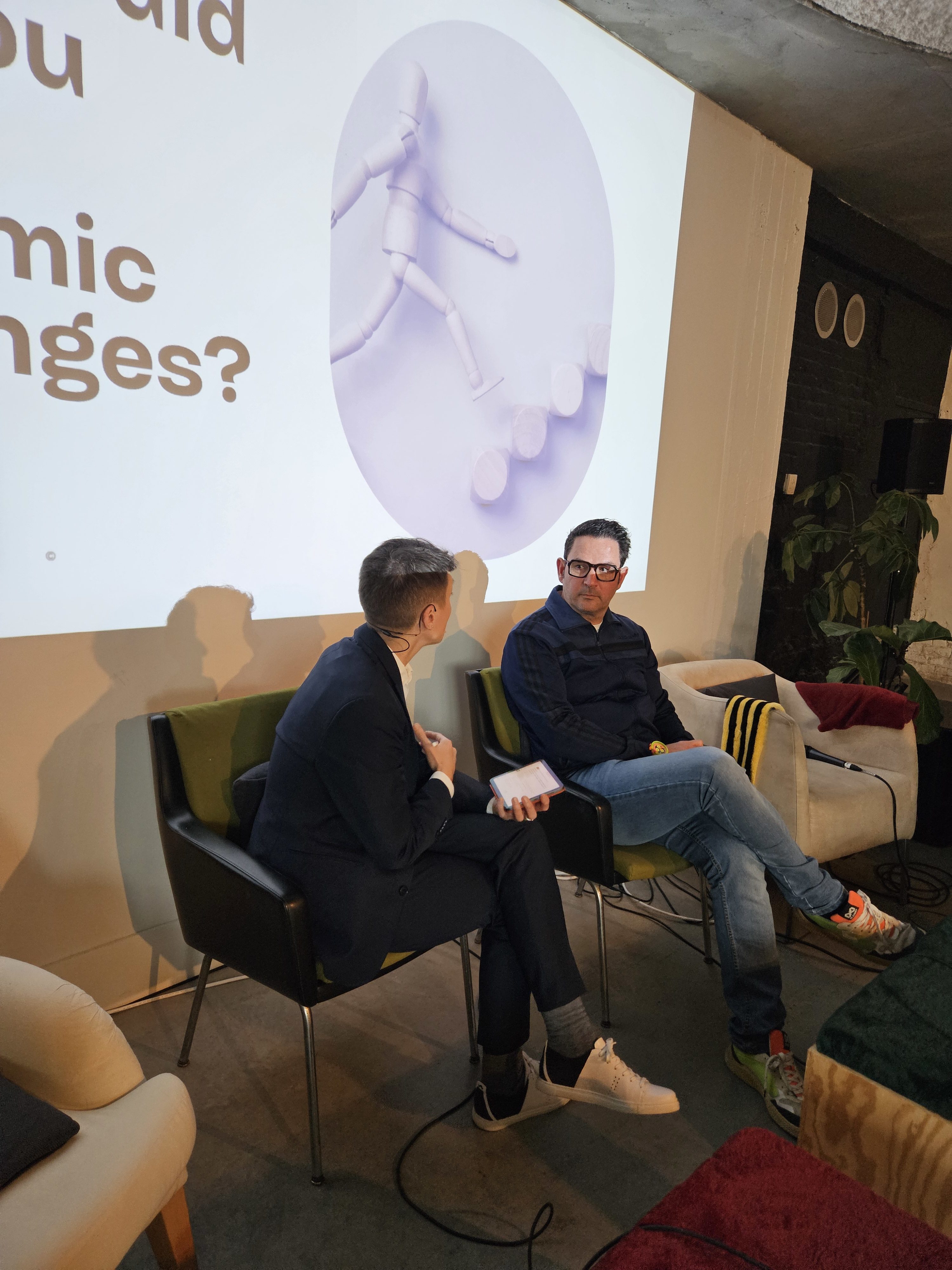
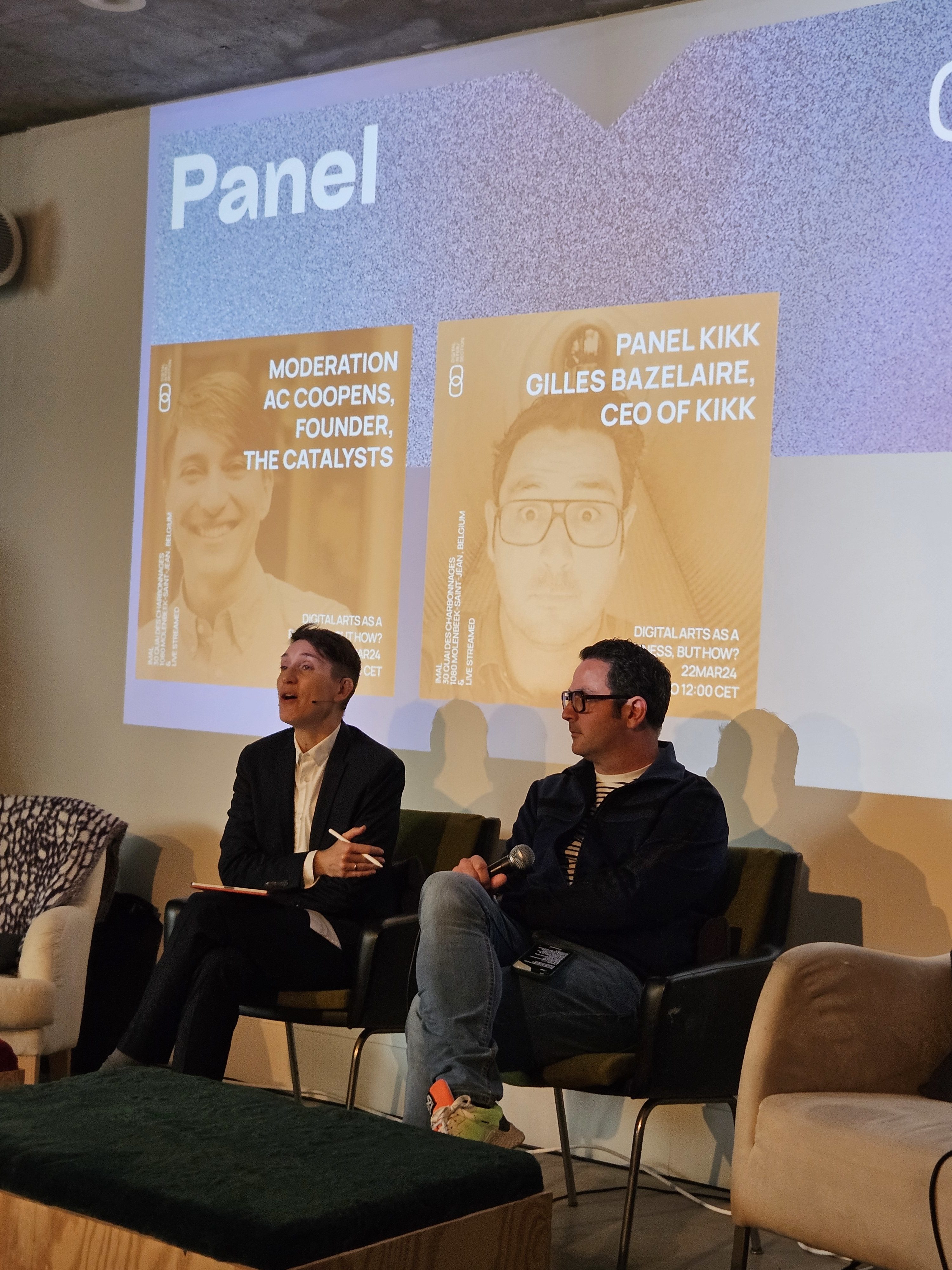

AC Coopens, who is still steering the meeting, then asks the following toughie: ‘What alternative monetisation channels have you already experimented with at KIKK?’ On the slide, numerous inspiring examples developed by other organisations are displayed: working hand-in-hand with private companies to acquire new spaces, implementing a Video On Demand (VOD) offer, organising an augmented reality (AR) festival, initiating marketing campaigns, etc. ‘I first of all have to confide that we started KIKK in the worst of ways, completely for free,’ remembers Gilles Bazelaire. ‘I was proud of it, but I came to understand that it was absolutely not sustainable. Today we have a permanent exhibition site, the Pavillon, which allows us, to a certain extent, to amortise the costs of organising our annual festival, but above all to reach out to new audiences such as the schools and a more local public in comparison with KIKK’s international reach. With my colleague Marie du Chastel, KIKK’s curator and artistic director, we are also committed to launching a sister organisation geared towards expertise and advice, inspired by our Marseille confreres at Chroniques. One branch of KIKK will without a doubt be business oriented. But what is complicated is that my co-workers are there for the art, not to find new business models. I don’t have any sales and marketing profiles on my team.’ On that point, for that matter, whilst the institutions taking part in the survey across the board consider themselves connoisseurs of the arts, only a small dozen replied in the affirmative to the question: ‘Do you consider that your teams have solid business expertise?’
Shining a light on the invisibles
After the theory of the digital arts, down to the practice. A well-deserved lunchbreak later, the small troop led by wake! makes its way to Tour et Taxis, where the fourth edition of Digital Spring is taking place. Organised by paradigm.brussels, a public body operating in the Brussels-Capital Region, the exhibition aspires to be an educational showcase through which any citizen may get to grips with the digital services around them. But it is to attend another festival held under the Digital Spring umbrella that we stop off at the heart of this former industrial site.
Under the care of XR4Heritage, a programme to promote the heritage intimately linked to the issue of our past, and which we talked to you about in an earlier article on kingkong, the Invisible Festival is the first AR festival to shine a light on the invisibles of history. What invisibles, you might be wondering? For this very first edition, the programming has endeavoured to render visible various living cultures from the African continent and African diasporas in Europe by means of virtual works, video games and historical avatars, making full use of the multitude of digital tools and artificial intelligence (AI) to give them a voice.
A few familiar faces are spotted. The Brussels-based Minister for the Digital Transition, Bernard Clerfayt (DéFi) pays a visit, and the French Oscar-winning director and activist Euzhan Palcy, the festival’s patron, also drops by. And despite a low-key atmosphere, at least for the time we were there – let’s not forget that it is a first edition –, the festival is rich in experiences, mixing an offer of B2B meetings and discussions, but first and foremost numerous demonstrations of AR in an artistic, participatory and decolonial dynamic.
‘Hall of Fame’, for example, offers an exhibition giving pride of place to the avatar through a dozen African and Afro-descendant historical figures with which the public can interact. Mama Sambo, W.E.B Dubois, Paul Panda Farnana M’Fumu, etc. Their life experiences take different directions, given the eras in which they lived, but they are all brought together by a tribute crafted by a handful of international digital artists. Outside the Tour et Taxis pavilion, a circuit of augmented art awaits us. A few technical glitches prevent us from benefiting 100% from the experience, but, in substance, the artists in situ to bring them to life insist on the empowerment they were able to bestow on minorities and groups habitually discriminated against via an XXL display of engaged works visible by superimposition on the real.
Finally, ‘Noire’, a sensitive immersive installation, an adaptation of the eponymous work by Tania de Montaigne, takes a look into the little-known life of Claudette Colvin. ‘You are a woman, so less than a man, and you are a black woman, so less than nothing. Who is there after the black woman? No-one has returned to tell us.’ In 1955, this young Afro-American woman, only just turned fifteen, refused to give up her seat to a white passenger on an Alabama bus. The first to take her town to court and to plead not guilty after her arrest, the name of this civil rights activist would rapidly be forgotten, unlike that of a certain Rosa Parks. At the Invisible Festival, then, it is to be hoped that there are many more editions to come to pursue this paying of respects and continue to kindle everybody’s pride in belonging to this shared history, whilst respecting the identities of each individual person.
wake! In concrete terms, wassat?
Behind this rallying cry have sprung into action countless actors in the Walloon digital creative ecosystem. They constitute the biodiversity of an effervescent sector whose liveliness is expressed by events, business companies, networks, sites or initiatives. Designed as a lever for the economic development of Wallonia, wake! aims to be an accessible platform. Whether you are a business, a studio, a festival, a collective, a fablab… The main thing is that you have the soul and the energy typical of digital creativity.
Want to take part in the adventure? It’s this way.
A story, projects or an idea to share?
Suggest your content on kingkong.

